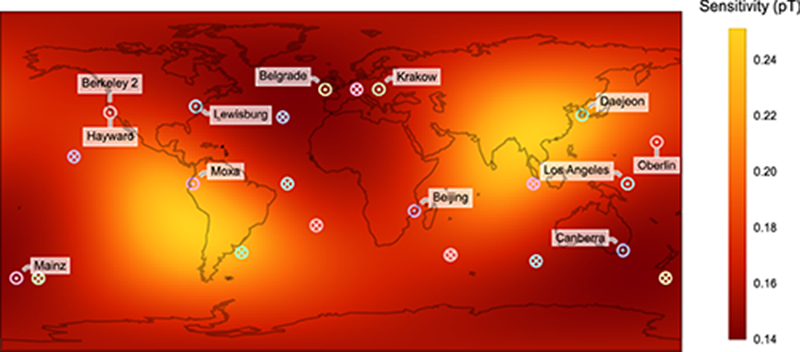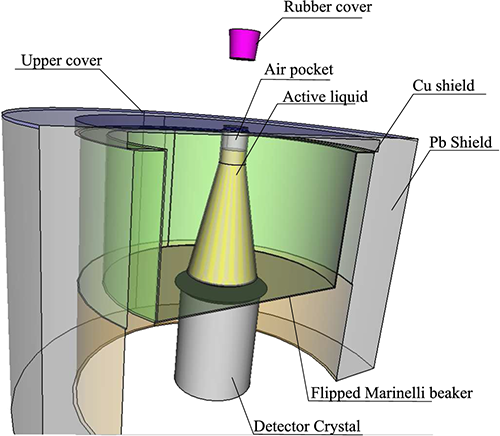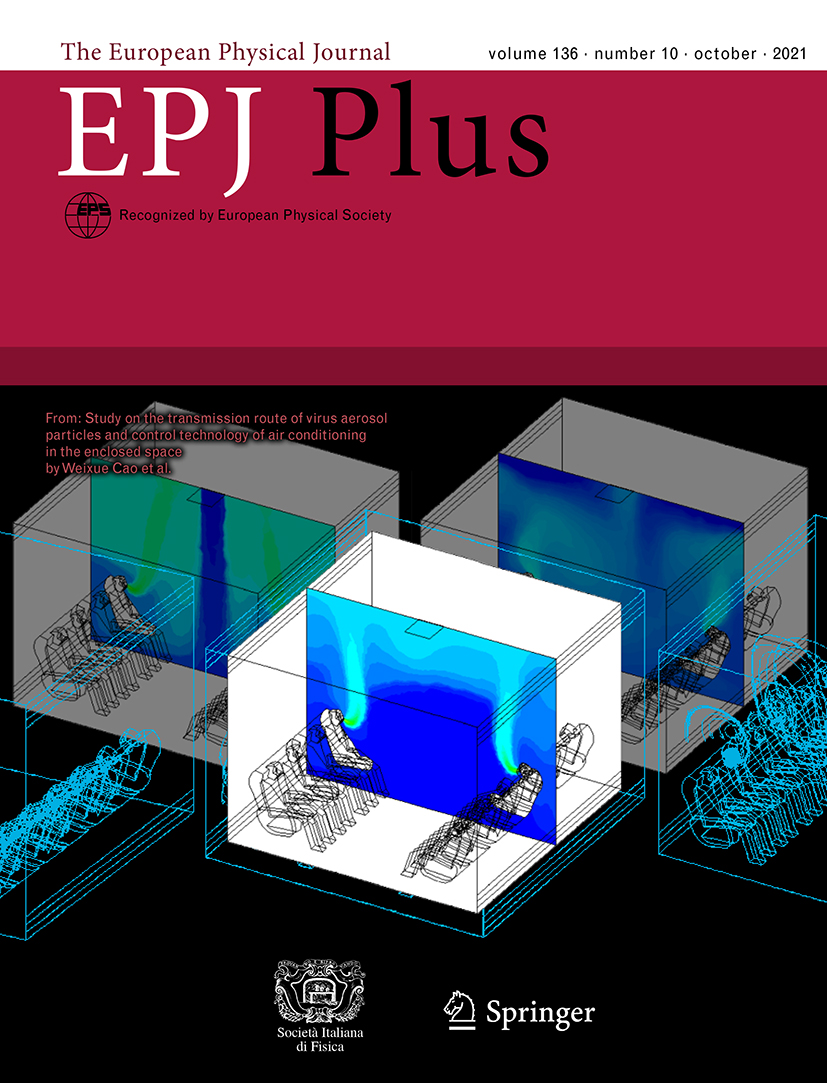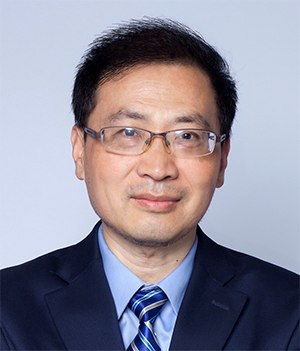News
EPJ D Highlight - Assessing and optimising the quality of sensor networks
- Details
- Published on 25 January 2022

A new method for optimising the arrangements of complex sensor networks could lead to improvements in a variety of cutting-edge experiments: including the ongoing search for Dark Matter
Rather than using a single, centralised sensor to gather data, many experiments deploy multiple sensors in complex networks. This offers numerous advantages: including higher sensitivities and resolutions in experimental measurements, and the ability to catch and correct errors more effectively. Yet with all the complexities involved in managing each sensor, and collecting all of their data streams at once, it can be extremely challenging to determine how the sensors should be arranged to obtain optimal results. Through new research published in EPJ D, Joseph Smiga at Johannes Gutenberg University Mainz proposes a new way to quantify the quality of sensor networks, and uses his methods to suggest improvements to existing experiments.
EPJ Plus Highlight - Reassessing radon as a reliable groundwater tracer
- Details
- Published on 25 January 2022

A widely used technique for tracing natural radioactive atoms within flowing groundwater may not be as accurate as previously thought.
All radioactive materials which naturally occur in water will produce at least one isotope of radon as a decay product. As radioactive atoms are transported through groundwater aquifers in the form of gaseous radon, they are eventually transferred to the atmosphere. Measurements of the rate of this transfer can, in theory, be used to trace the infiltration of water into the surrounding soil. Yet in a new study detailed in EPJ Plus, researchers in Egypt and Saudi Arabia, led by Elsayed Elmaghraby at the Egyptian Atomic Energy Authority, show that this technique could have a significant flaw.
EPJ H Highlight - A shifting approach to modelling phase transitions
- Details
- Published on 25 January 2022

Between the years 1937 and 1970, physicists went from taking a ‘naturalistic’ approach to modelling phase transitions, to a ‘caricature’ approach – which incorporated far less realistic models. New analysis of this period provides new insights into this profound shift in thinking.
Models of complex physical systems are a central aspect of theoretical physics. Yet despite their importance, there isn’t a single, overarching approach to the practice: meaning researchers in separate branches of physics will rarely use the same methods to construct their models. In one particularly interesting case, approaches for modelling phase transitions underwent a drastic transformation, between the years of 1937 and 1970. In a new paper published in EPJ H, Martin Niss at Roskilde University, Denmark, characterises this fundamental change in thinking.
EPJ Plus has two new Editors-in-Chief: Beatrice Fraboni and Gastón García López
- Details
- Published on 21 January 2022

The publishers of The European Physical Journal Plus (EPJ Plus) are pleased to announce that on January 1, 2022 Beatrice Fraboni and Gastón García López took over the Editor-in-Chief role from Paolo Biscari and now share responsibility for papers submitted across the scope of the journal.
We would like to congratulate Prof Fraboni and Dr García López on their appointments as EiCs, and also take the opportunity to thank Prof Biscari for his long and highly dedicated service to EPJ Plus.
EPJ Web of Conferences Highlight - mm Universe @ NIKA2 - Observing the mm Universe with the NIKA2 camera
- Details
- Published on 20 January 2022

The mm Universe conference is the second edition in a series of biennial workshops.
This international conference is mainly dedicated to the scientific exploitation of the NIKA2 camera installed at the 30-m telescope of IRAM located in Pico Veleta (Spain). The conference focused on scientific topics such as the environmental impact on dust properties, the star formation processes at low and high redshifts, the evolution of large-scale structures and the use of galaxy clusters for precision cosmology.
EPJ ST: Baohua Ji new Editor on board
- Details
- Published on 17 January 2022

The publishers of The European Physical Journal Special Topics are pleased to announce the appointment of Dr. Baohua Ji as new Editor in the board.
Dr. Baohua Ji is currently professor of biomechanics of Zhejiang University. He earned his B.S and Ph.D degrees from Xi’an Jiaotong University of China in 1993 and 1998, respectively. He did his postdoc research at Institute of Mechanics of Chinese Academy of Science during 1998-2001, and at Max-Planck Institute for Metal Research during 2001-2004. His research is currently focused on cell-matrix interaction, collective cell behaviors, and mechanomedicine (mechanobiology based medicine). The objective of the research is to achieve a quantitative understanding of how forces and deformation affect human health and disease from molecular, cellular and tissue levels. Dr. Ji has published over 120 peer-reviewed Journal papers. And he has received several awards including the Outstanding Young Scientist Award of the Chinese Society of Theoretical and Applied Mechanics (2009), the NSFC Outstanding Young Scientists Award (2010) and National 10-Thousand program for leading talents (2017).
EPJ C – New structure for the theory sections as of 2022
- Details
- Published on 12 January 2022

The publishers of The European Physical Journal C - Particles and Fields (EPJ C) are pleased to announce a new structure for the theory sections of the journal. As of January 2022 the current section ‘Theoretical Physics II: Gravitation, Astroparticle Physics, Cosmology, Quantum Field Theories’ (Editor-in-Chief: Prof. Kostas Skenderis, Deputy Editor-in-Chief Prof. Dominik Schwarz) will be split – into ‘Theoretical Physics II: Astroparticle Physics and Cosmology - Models and Phenomenology’, to be headed by Dominik Schwarz; and ‘Theoretical Physics III: Quantum Field Theory and Gravity - Fundamental and Formal Aspects’, to be headed by Kostas Skenderis. This change reflects the rapid development of the current Theoretical Physics II section under Kostas Skenderis over the past few years. We would like to thank Professor Skenderis for his excellent management of the section and to welcome Professor Schwarz as a new Editor-in-Chief of EPJ C. As head of the Astroparticle Physics and Cosmology Working Group at Bielefeld University, Schwarz is an expert on the interfaces between particle physics and cosmology and between modelling and observational cosmology. His research interests include cosmological inflation and the thermal history of the Universe, the cosmic microwave background and large-scale structures, dark matter and dark energy.
EPJ ST Highlight - Examining recent developments in Quantum Chromodynamics
- Details
- Published on 14 December 2021

The strong nuclear force is responsible for binding together quarks, the basic building blocks of protons and neutrons, that comprise almost all of the visible matter. A new collection looks at recent development in the field of Quantum Chromodynamics (QCD) from a range of perspectives.
Created as an analogy for Quantum Electrodynamics (QED) — which describes the interactions due to the electromagnetic force carried by photons — Quantum Chromodynamics (QCD) is the theory of physics that explains the interactions mediated by the strong force — one of the four fundamental forces of nature.
A new collection of papers published in EPJ Special Topics, and edited by Diogo Boito, Instituto de Fisica de Sao Carlos, Universidade de Sao Paulo, Brazil, and Irinel Caprini, Horia Hulubei National Institute for Physics and Nuclear Engineering, Bucharest, Romania, brings together recent developments in the investigation of QCD.
EPJA appoints Patrizia Rossi as Managing Editor for Reviews and Letters to the Editor (experiment)
- Details
- Published on 13 December 2021

The publishers of The European Physical Journal A: Hadrons and Nuclei are pleased to announce the appointment of Dr Patrizia Rossi as Managing Editor for Reviews and Letters to the Editor (experiment) as of 1 January 2022.
Patrizia Rossi is the Deputy Associate Director for Nuclear Physics at Jefferson Lab (JLab), Research Professor at George Washington University, and Research Director at the Frascati National Laboratories of INFN-Italy (on leave). Her scientific research focuses on hadron and nuclear physics using electromagnetic probes. This research aims to study the structure of the nucleon and the nature of the strong interaction in terms of fundamental constituents of QCD. Her most recent investigations are related to the study of the transverse momentum parton distribution functions for which she is co-spokesperson for several experiments.
EPJ Plus Focus Point on Small and Medium Particle Accelerator Facilities in Europe
- Details
- Published on 10 December 2021

Small and Medium Particle Accelerator Facilities (SMPAF) play a very important role in the landscape of European research. They can accelerate a variety of atomic nuclei, at energies in the MeV range, and have a cross-disciplinary application field. In most cases, they are open to external users, so a proper knowledge by the community of the possibilities provided by these facilities is of great importance.
Unlike other user-focused accelerators facilities such as synchrotrons, SMPAF have different characteristics. Given the relevance and the variability of the instrumentation and the available techniques (including medical science, neutrons, irradiation with swift heavy ions, detectors tests, low-energy nuclear physics, etc.), it has been found very timely to publish a series of focused articles, describing the current situation of some key centres of this kind. This Focus Point on Small and Medium Particle Accelerator Facilities in Europe presents a selection of ten representative and significant European SMPAF. Each article contains a brief description of the facility, including its often unique instrumentation or techniques, and a few recent research highlights.
All articles are available here and are freely accessible until 9 February 2022. For further information read the Editorial





